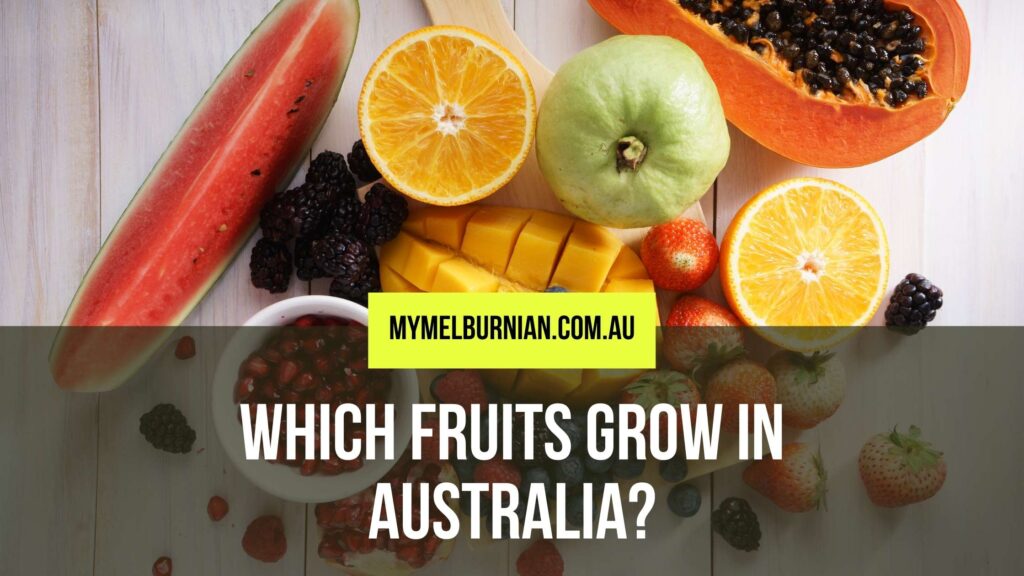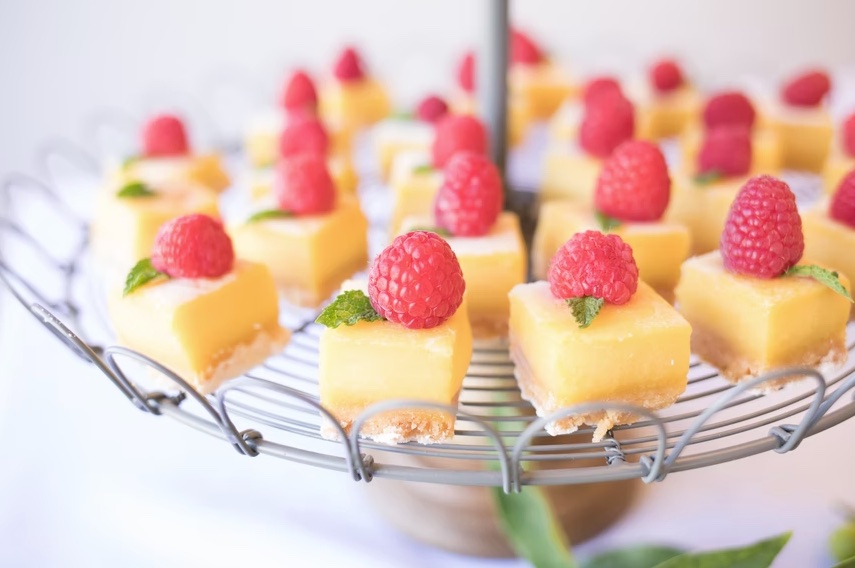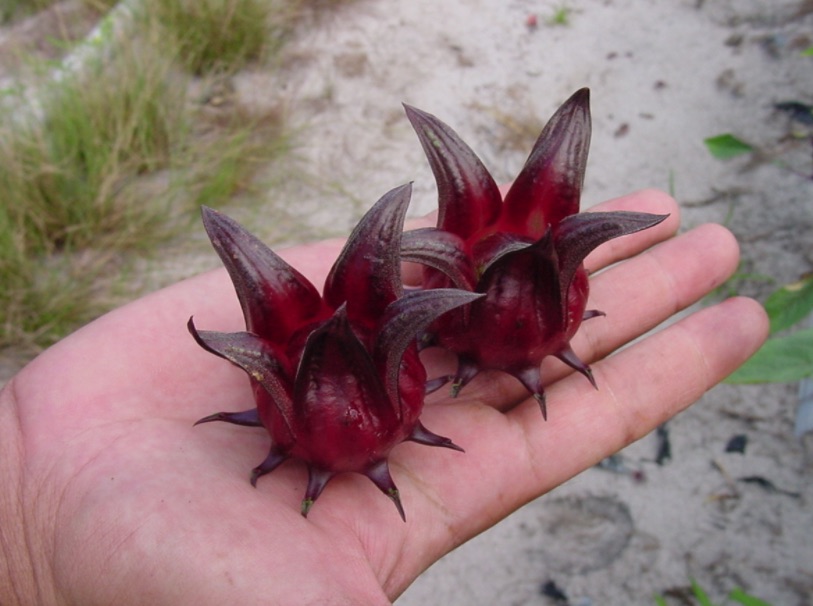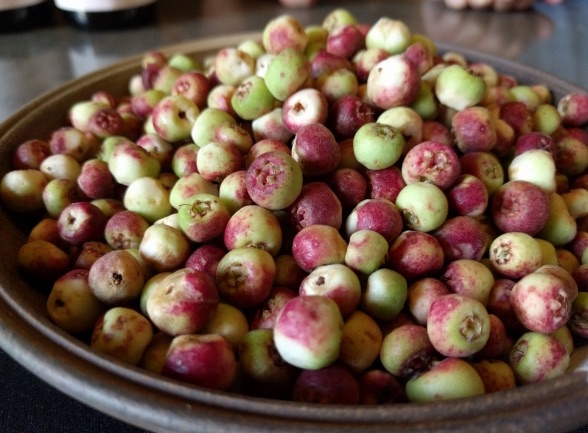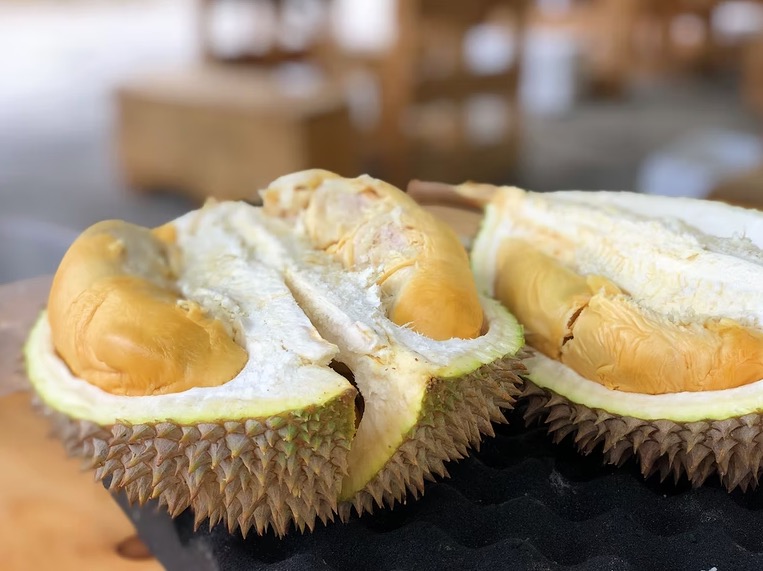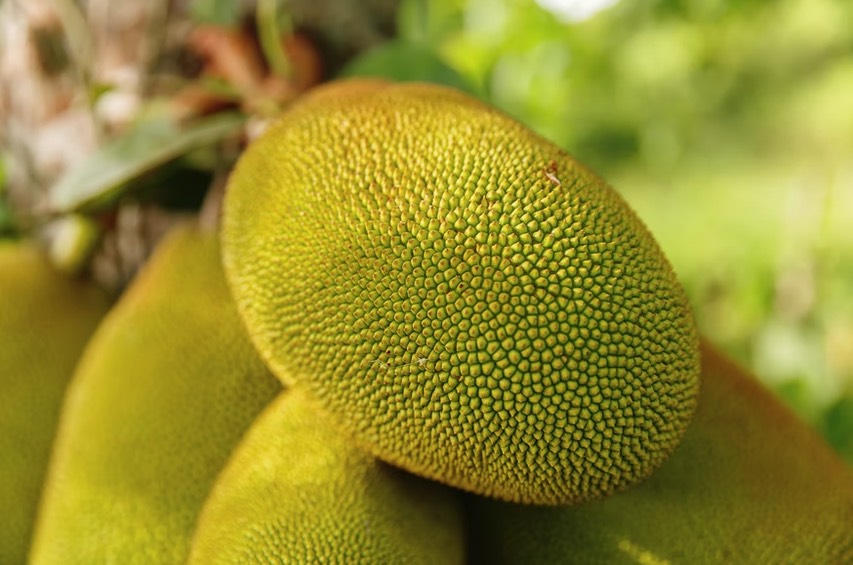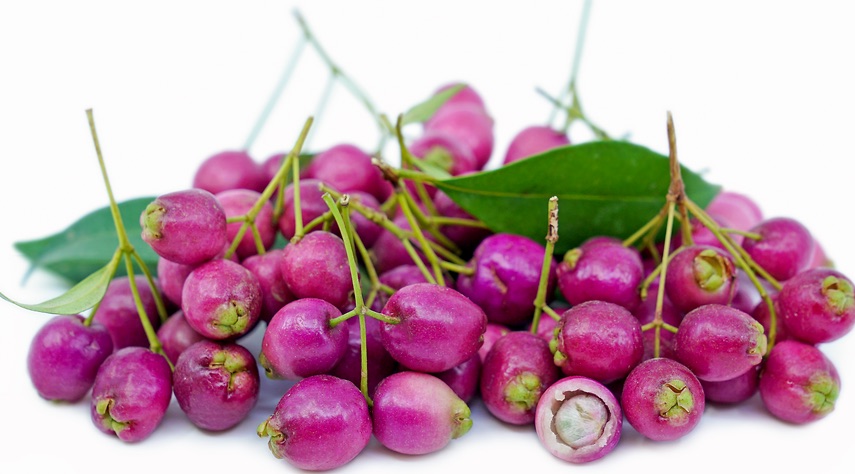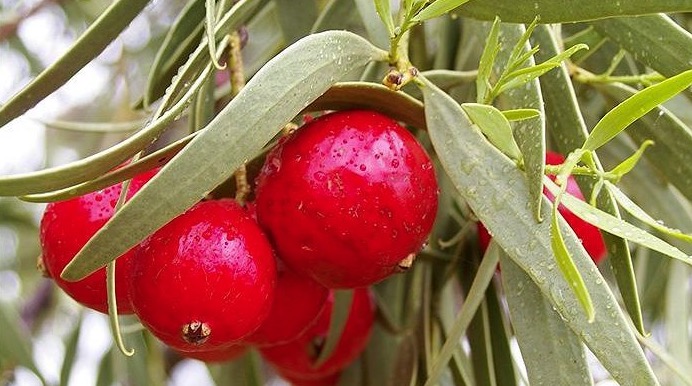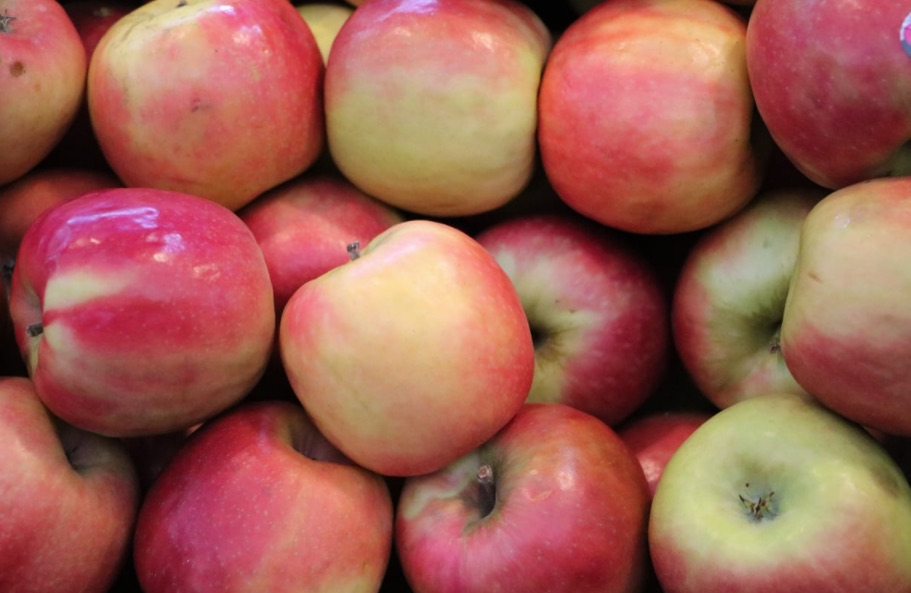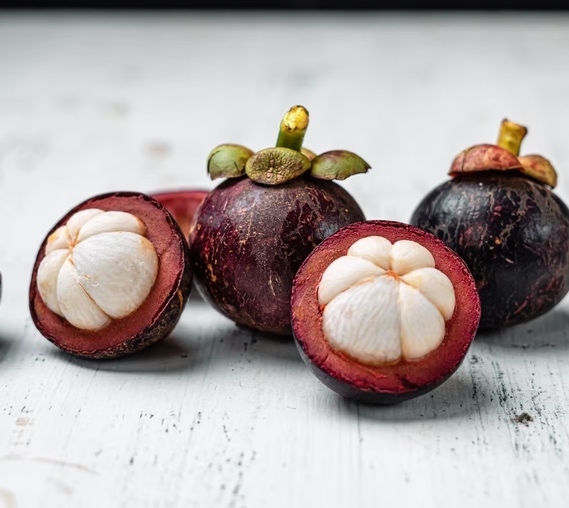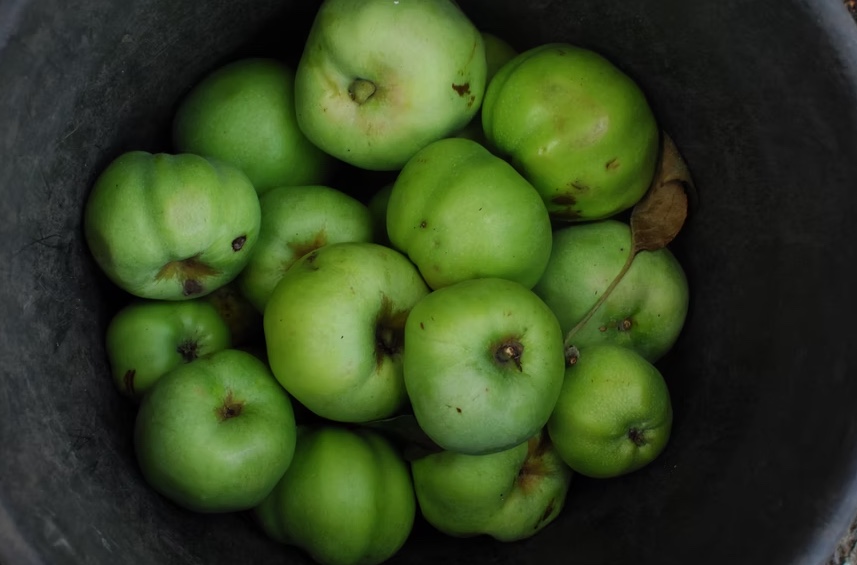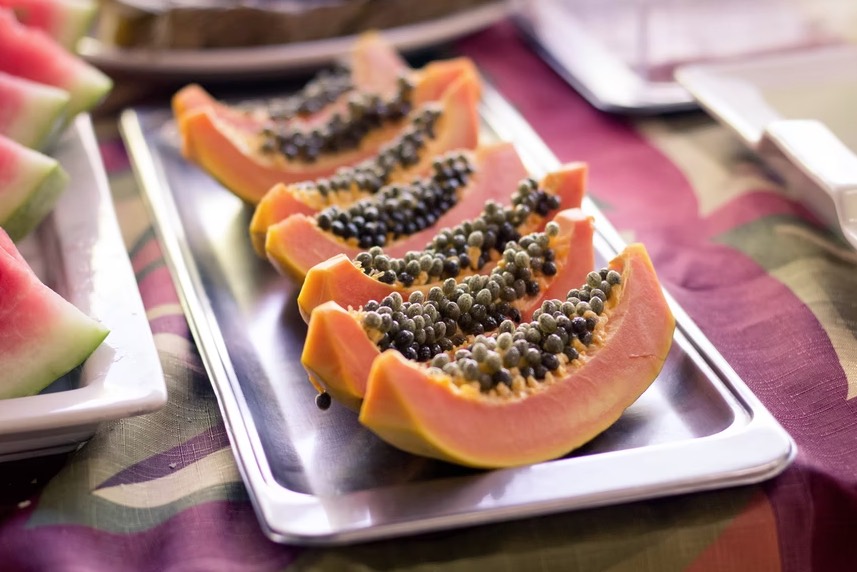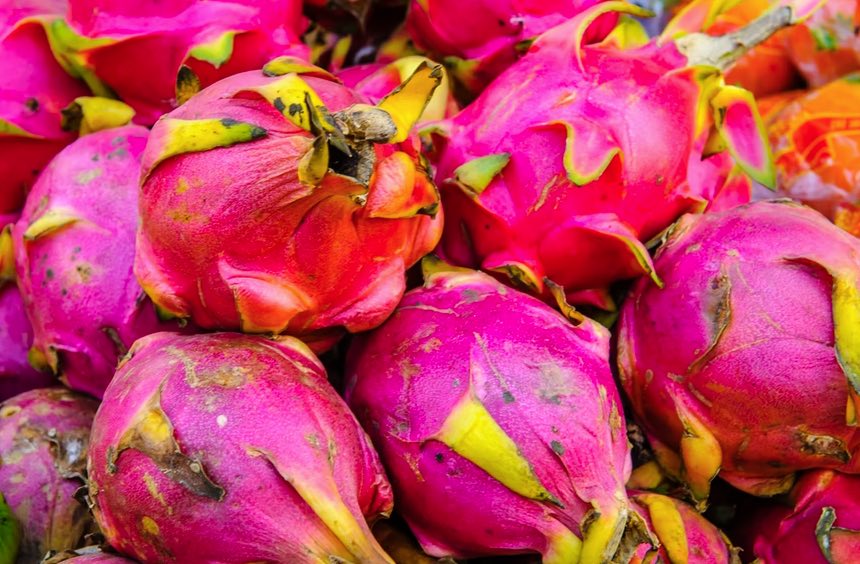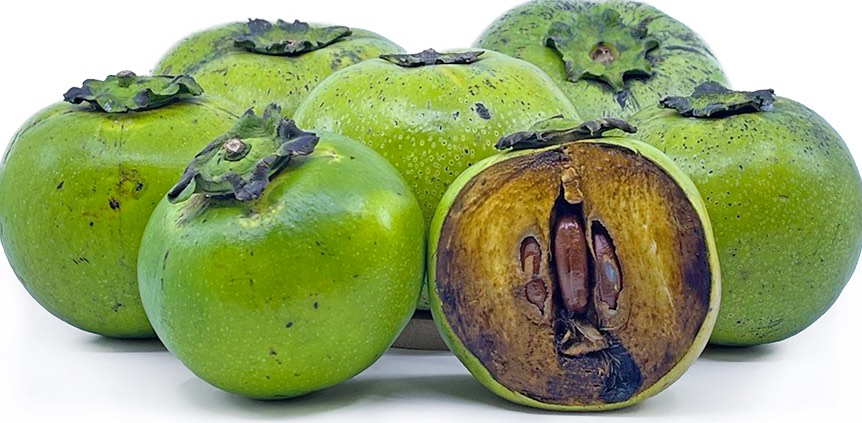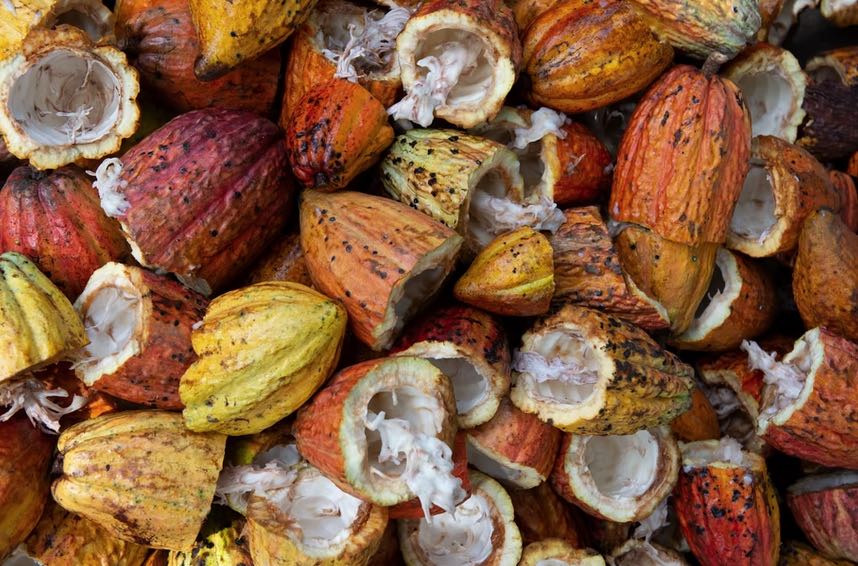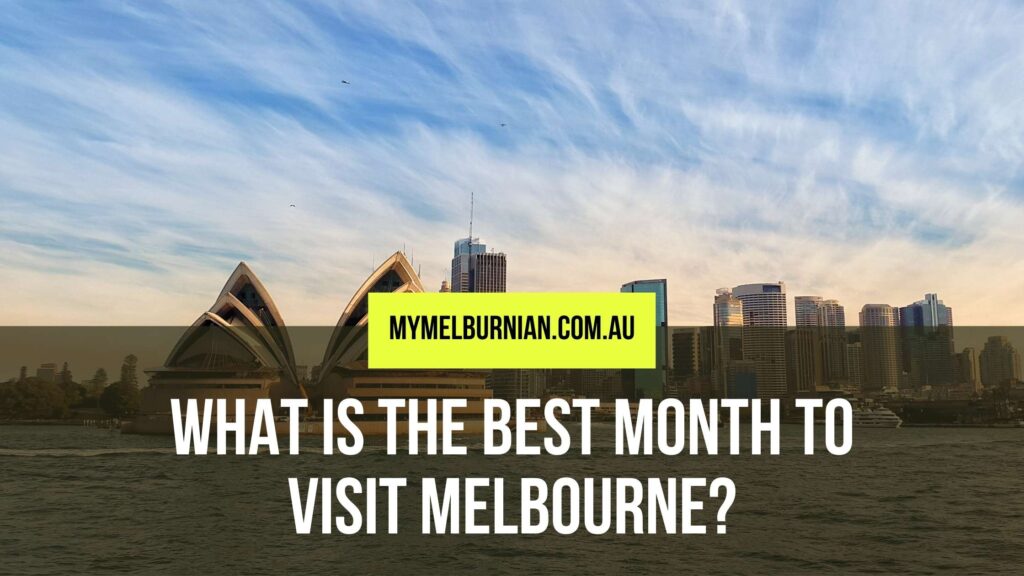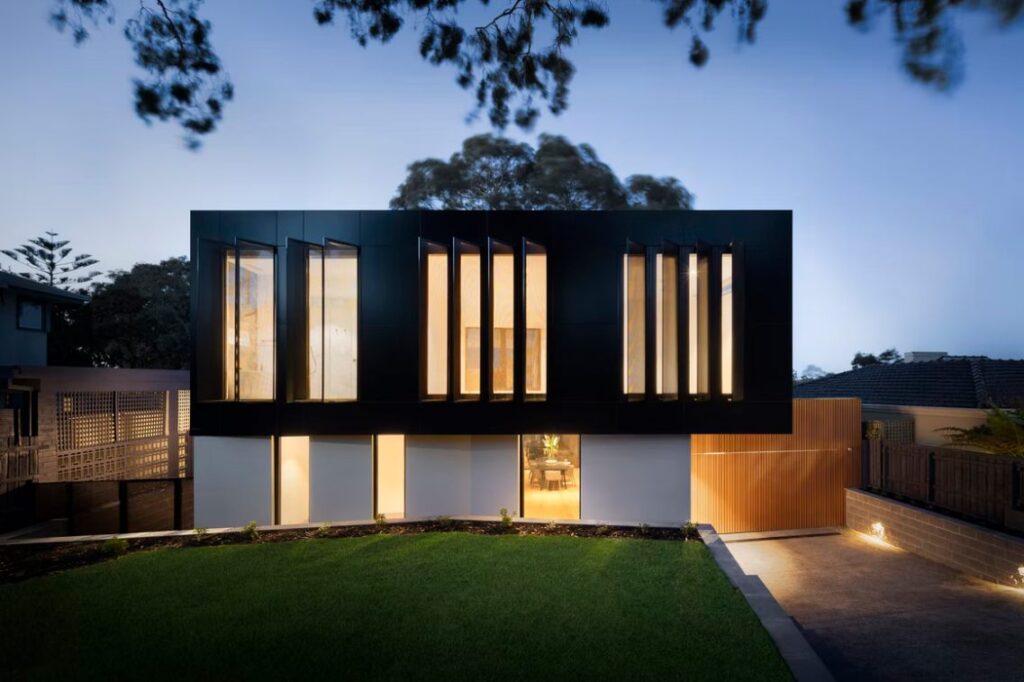For example, the climate of Queensland, Australia is not ideal for growing vegetables. Vegetable gardening in this region is not easy, but it is possible with little research and the selection of hardy species. We'll take a look at the weather and plant types to give you an edge in crop success.
Many of Australia's largest fruit-growing regions are located in:
- Goulburn Valley, in the Australian state of Victoria.
- The New South Wales region known as the Murrumbidgee Irrigation District.
- Region of Victoria and New South Wales known as Sunraysia.
- The Riverland area of South Australia.
- To the north of Tasmania.
- Northern New South Wales and southern Queensland's coastline.
Although fruit is grown all around Australia, the state of Queensland is particularly well-known for its tropical fruits. While California focuses on citrous fruits, other states prioritise stonefruits, apples, oranges, grapes, and vegetables.
Climates in Australia range between tropical to arid. Many of Australia's fruit trees are nurtured in the equatorial regions, where the weather rarely dips below freezing and there is a constant supply of rain. The fruit grown in Australia is hence distinct and exotic because of this. Americans have a hard time identifying most types of fruit. Hawaii has the most similar climate to that of Australia of any state in the USA. Florida comes in at a close second, but its temperatures are still too low to support the growth of Australian fruit trees.
The climate, the tree's location in the garden, and most importantly the soil must all be suitable for the tree to thrive. For trees to flourish and produce fruit, the soil must be in good condition. The SGA website has a wealth of resources dedicated to soil that can be used to prepare a plot for planting.
Southern states are home to a wide variety of fruit trees, but citrous and deciduous trees are by far the most common.
Some tropical fruits, such as avocados in Melbourne, are even thriving in milder climates. These guidelines still hold true, but remember that these plants are particularly sensitive to cold when they are young. They require a bright, warm location with access to abundant summer water.
Thanks to plant breeding, grafting, and careful selection, we now have cultivars and types that can thrive in a wider range of climates than their wild ancestors. Fruit, on the other hand, grows better in some climates than in others. If you want to plant a tree, but you want it to thrive in your area, consider these pointers.
If eating is one of the finest ways to learn about a new culture, then becoming acquainted with North Queensland means sampling its exotic fruits that you won't find in your local grocery store.
Some of the most well-known types of tropical fruit, including bananas, pineapples, melons, and coconuts, are available in tropical Australia for purchase pretty much all year round. Many varieties of tropical fruit exist, although they are less well-known and so rarely exported.
At the farmer's market, you can pick up a few different kinds of fruit to try later.
Native Raspberry
Australian native raspberry bushes produce delicious, sweet, red berries from June through October and can be found growing near creeks and footpaths in sunny locations. Both fresh and cooked, they make excellent spreads and condiments.
You may feed your family and the birds and butterflies you love with cranberries, just as you would with blackberries or raspberries. Keeping everything pruned is essential, but even nature keeps that simple.
Native raspberry leaves can be brewed into a tea that is supposed to assist digestion.
Strawberries
Strawberries, a tasty fruit that reappears each year, are perennials. There are a wide variety of options available. Some varieties spread by means of "runners," which eventually take root and multiply in your garden without cost.
Rosella Jam
The rosella, or wild hibiscus, used to make this jam is native to North Queensland. Simmering rosellas in sugar water results in a thicker sauce. The end product is indeed a tart jam that is a deep crimson colour. Rosella jam is best served with scones or puftaloons.
Muntries
This cheap shrub is native to the southern coast of Australia, and its fruit has a flavour between between apples and juniper berries. The ripe fruit has a reddish green colour. After being collected, the fruit can be consumed fresh, frozen, or dried.
Muntries are best used in dessert applications, such as jams and chutneys, or as a topping for ice cream.
Durian
The durian (Durio zibethinus) grows to a height of up to 130 feet and is an erect, tropical fruit tree. There has a diameter of almost 4 feet at the trunk. The thick, dark green leaves are evergreen and oblong in shape. The underside is covered in grey hairs, but the top is smooth and lustrous. The diameter of the white & gold-brown blossoms is between two and three inches. There is a clump of these bell-shaped flowers at the very tips of the branches. The spherical fruit can reach a length of 6-12 inches and a hefty 18 pounds. There are sharp spikes all around the yellowish green fruit. The rich, white flesh gives out a pungent aroma that is reminiscent of turpentine, cheese, and overripe onions. Durian is a popular fruit that is eaten fresh and has a flavour similar to almond custard. The durian tree requires a lot of moisture and rich, loose soil to thrive.
In other words, the phrase "Durian is an acquired taste" is a gross understatement.
This tropical fruit, originating in Southeast Asia, is prohibited on public transportation and in most hotels because to its extremely offensive odour. My car smelled terrible for days after I brought this home from the market.
It's something that, if nothing else, you have to experience at least once. To ensure you are getting the greatest quality, it is recommended that you try one straight from the farm if at all possible.
The interior is as smooth and creamy as large oysters. How does it taste? Taste for this one is definitely an acquired one.
Jackfruit
Temperatures below 32 degrees Fahrenheit are fatal for jackfruit (Artocarpus heterophyllus), a relative of breadfruit. This tree can reach heights of 30–70 feet, and it bears fruit year-round. Glossy at 9 inches in length, the leathery oval leaves are also rather sturdy. The tree's trunk and larger branches are covered with short, blooming twigs. Fruit from jackfruit trees can reach lengths of 3 feet and weights of 10 to 60 pounds. When ripe, jackfruit change colour from green to yellow. The odour of overripe onions permeates the unopened fruit. The interior has a sweet, banana-like flavour and a pineapple-like aroma. The jackfruit tree requires wet, deep, and nutrient-dense soil to thrive.
FAQs About Fruits In Melbourne
Australian native plant foods include quandong, kutjera, muntries, riberry, Davidson's plum, and finger lime. Native spices include lemon myrtle, mountain pepper, and the Kakadu plum. Various native yams are valued as food, and a popular leafy vegetable is warrigal greens.
Aussie consumers are still bananas for bananas. It is the nation's most popular fruit.
There are many species of Australian native fruits, such as quandong (native peach), wattleseed, muntries/munthari berry, Illawarra plums, riberry, native raspberries, Lilli pillies, as well as a range of native citrus species, including the desert lime and finger lime.
The major fruit-growing areas in Australia include the Goulburn Valley of Victoria; the Murrumbidgee Irrigation Area of New South Wales; the Sunraysia district of Victoria/NSW; the Riverland region of South Australia; northern Tasmania; and the coastal strip of both northern NSW and Queensland.
Durians
Durians are regarded as the 'king of fruits, but many find their smell offensive.
Lilly Pilly
The leaves of the evergreen lily-of-the-valley shrub are thick and beautiful. The Lilly pilly or riberry fruit is planted as an ornamental tree in Australia. The fruit, which comes in a wide range of sizes and colours due to the fact that there are over fifty different plant species, can range from fuchsia to light pink in form and size.
The fruit, which has a solid consistency and a flavour similar of pears and apples can be eaten right off the tree, but it also works well when cooked into a variety of sweets, jellies, and sauces. Fresh versions are only attainable from December through February, although frozen ones are available year-round.
Quandong
The flavour of a quandong, a small Australian fruit, has been likened to a cross between peach and apricots. The fruit is bright red and slightly sour. The edible seed at the centre of the fruit has a somewhat sweet almond flavour and may be toasted or pressed to extract oil.
Fruit jams, pies, and fruit purées benefit greatly from the addition of quandongs.
Cripps Pink
It was in the late twentieth century that Australian apple breeder John Cripps created the Cripps pink variety, which bears his name. The apples have a bright red skin and white, creamy, or very light yellow flesh. When eaten fresh, the sweet and somewhat sharp flavours of these fruits really shine.
Most Cripps pink apples come from Australia, although you may also get them in Canada, Chile, Brasil, as well as the United States.
Mangosteen
The mangosteen tree (Garcinia mangostana) is indeed a slow-growing tropical upright fruit tree. This 20- to 82-foot-tall tree has a unique pyramidal form. The stalks of the evergreen leaves are rather brief. These dark green, elongated leaves are glossy on top and matte on the underside. Blossoms range in size from 1-1/2 to 2 inches in diameter, and its fleshy, four-petaled blooms are green on the outside with yellowish-red on the interior. The mangosteen fruit is spherical and has a velvety, deep purple skin. The acidic flavour of the white flesh stands out. Mangosteen trees can't withstand temperatures lower than about 40 degrees Fahrenheit for very long. High humidity, 50 inches of yearly rainfall, and no drought are essential growing conditions for this fruit tree. Mangosteens, when eaten fresh, have a flavour similar to vanilla ice cream with hints of strawberry and peach.
The mangosteen, on the other hand, is a pleasant surprise in terms of taste and deserves to be devoured.
Originating in Asia, they thrive in northern Australia with little effort.
The meat is sweet and delicious, and is best eaten by cutting it out of the middle and eating it with a spoon.
Granny Smith
These green apples, known all over the world, were first cultivated in Australia. Maria Ann Smith supposedly discovered an apple sapling near her home in 1868. The apples it produced soon after were of a pale green hue and were delicious raw or cooked. Granny Smith apples, known for their green skin with a rosy lipstick, bright white meat, and firm texture, were first grown commercially in New Zealand in 1895 and have since become one of the most famous apple kinds in the world.
Crisp and tangy, like a lemon, is the best way to describe the flavour. These apples are delicious when eaten raw and go well with salty cheeses. In addition, Granny Smiths retain their form admirably when baked, making them a popular choice for desserts including pies, cobblers, cakes, cakes, and tarts.
Papaya/Pawpaw
In spite of the common misconception, papaya & pawpaw are not the same fruit despite the widespread use of these two names.
The flesh of a pawpaw, which is larger, is yellow. The insides of papaya, which are smaller and crimson, are fruitier.
They are readily available year-round since they grow year-round in tropical regions.
If you haven't tried them before because you thought they wouldn't taste good, give them a shot with a squeeze of lime. Chopping up some papaya, red onion, and coriander and mixing them together with some freshly squeezed lime juice makes a tasty salsa that pairs well with fish. Yum.
Dragonfruit
Dragonfruit is one of the fruits that appears more impressive than what it tastes, but is transformed into a much more enjoyable experience when a bit of lime juice is added.
They are increasingly commercially available in grocery stores, and they always liven up a fruit salad, if only for the aesthetic value they bring.
Black Sapote
The black times over the course is a rare tropical fruit. The interior has the consistency of a delicious, sugar-free chocolate pudding. In order to cut the richness, pair it with a more mild fruit, such as a banana. When combined with other flavours, it creates a fantastic chocolate ice cream. Make absolutely sure it's fresh before eating if you decide to buy one. The outside should be soft & turning black.
Cacao
Although cacao fruits aren't particularly tasty on their own, you might want to try one out nevertheless because their seeds are used to make chocolate.
When sliced in half, almond-shaped seeds are revealed, each nestled in a pocket fruit white flesh that can be sucked. All has a pleasant flavour, but that's about it.
Summer is a great time to grow fruit trees.
Evergreen fruit trees blossom in the summer. Citrus fruits like lemons, limes, oranges, grapefruits, and cumquats thrive when the soil is warmed by the sun.
The following is a complete guide to summer planting:
- Oranges (Evergreen) (Evergreen)
- Lemons (Evergreen) (Evergreen)
- Persimmons (Deciduous) (Deciduous)
- Pomegranates (Aquifer or aquifer, evergreen in tropical places) (Deciduous, evergreen in tropical areas)
- Grapefruits (Evergreen) (Evergreen)
- Nectarines (Deciduous) (Deciduous)
Fruit Trees To Plant In The Fall
Planting citrous trees in the fall is also a smart idea since, being evergreen, they will continue to thrive even when the weather cools down. Fall is not the best time to establish stone producing (deciduous) fruit trees due to the potential for shedding from the trees.
Some other species that do well when planted in the fall include:
- Apples (Deciduous) (Deciduous)
- Plums (Deciduous) (Deciduous)
- Pears (Deciduous) (Deciduous)
- Cherries (Deciduous) (Deciduous)
- Peaches (Deciduous) (Deciduous)
Planting Fruit Trees In The Winter
When planted bare-rooted in the winter, deciduous apple trees (including such pears, apple, fruits, cherries, peaches, and plums) thrive. On the other hand, evergreen trees can be planted even in the dead of winter.
- Persimmons (Deciduous) (Deciduous)
- Avocados (Semi-deciduous) (Semi-deciduous)
- The jaboticaba fruit (Evergreen)
- Guava (Evergreen) (Evergreen)
- Olives (Evergreen) (Evergreen)
- Lychee (Evergreen) (Evergreen)
- Durian (Evergreen) (Evergreen)
- Jackfruit (Evergreen) (Evergreen)
- Cashew (Evergreen) (Evergreen)
Planting Fruit Trees In The Spring
Since the soil starts to warm up in the spring, evergreen fruit trees can be planted then as well.
- Mangoes (Evergreen) (Evergreen)
- Apricots (Deciduous) (Deciduous)
- Coconuts (Evergreen) (Evergreen)
- Almonds (Deciduous) (Deciduous)
- Mulberries (Deciduous) (Deciduous)
- Peaches (Deciduous) (Deciduous)
- Figs (Deciduous) (Deciduous)
The Advantages Of Growing Your Own Fruit And Vegetables
A year-round garden that produces fruit and vegetables has several advantages.
- Organic food availability
- Less time spent grocery shopping
- Using less plastic
- Input and output management, from seed to harvest, including water, fertiliser, and pesticide use
- A stress-relieving activity that provides a sense of accomplishment
- The lowering of food prices
- Better garden biodiversity
What You'll Need For Fruit Tree Success?
- Sunlight is essential for the growth and development of all fruit trees.
- Fruit trees require plenty of room and enough drainage in order to thrive.
- Soil at the surface needs to be deep and soft, with a pH of 5.8 to 6.5.
- Plant your fruit trees in a sheltered area of your garden away from any strong winds.
- It's not possible to grow every kind of fruit tree from a seed. Some fruit trees, like pears and apples, can only produce fruit if planted next to them other.
- Cherries, apples, fruits, tangerines, lemons, and limes are just few of the fruit trees that do well when grown in containers.
- Rome wasn't constructed in a day, so keep that in mind. The results of your efforts may not be apparent right away. This process can take anywhere from one to ten years before any visible results are seen.
Many deciduous trees, including those that can be espaliered, are shaped like vases through wintertime pruning. In order to achieve a desirable form, pruning can be challenging during the first few years. Deadwood, invading branches, and excessive crowding can all be removed during late-season trimming, as can the tree's leaders and main limbs.
To bear fruit, some tree species need both male and female trees. Consult your local garden centre or gardening literature for more details on individual tree varieties (the local library is a brilliant resource).
The weather is favourable all year round, allowing a wide range of edible plants to flourish. Most types of cool-season and warm-season veggies can be grown if you plant at the correct time. Many types of tropical and subtropical fruits can be grown successfully across the vast majority of Australia.
Conclusion
Australia's main fruit-growing regions are found in Victoria, New South Wales and Queensland. Different states have different agricultural priorities; California is known for its citrous crops while others emphasise stonefruits, apples, oranges, grapes, and vegetables. Trees can't grow and bear fruit if the soil isn't healthy. Bananas and other well-known forms of tropical fruit can be purchased in tropical Australia for the most part throughout the year. Native raspberry leaves can be brewed into a tea that is said to improve digestion.
Muntries are best utilised in dessert applications, such as jams and chutneys, or as topping for ice cream. Durian (Durio zibethinus) grows to a height of up to 130 feet. A strong odour, resembling turpentine, cheese, and overripe onions, wafts from the dense white meat. The average jackfruit weighs between 10 and 60 pounds and can grow to a length of 3 feet. Lilly pilly or riberry fruit is grown as an ornamental tree in Australia.
The mangosteen tree is sensitive to temperatures below 40 degrees Fahrenheit. Cripps pink apples have a vivid crimson skin and white, creamy, or very light yellow flesh. Both mangosteens and Granny Smiths are among the most widely consumed apple varieties worldwide. Cacao is a rare tropical fruit that becomes black over the course of its whole existence. Sun-warmed soil is ideal for growing citrous fruits like lemons, limes, oranges, grapefruits, and cumquats.
The optimum time to plant an evergreen fruit tree is in the fall, before the cold weather sets in. Trees that provide fruit need a lot of space and good drainage if they are to flourish. In order to grow healthy plants, the topsoil must be deep and moist, with a pH of 5.8 to 6.5. All kinds of edible plants can thrive due to the consistently pleasant climate.
Content Summary
- The climate in Queensland, Australia, for instance, is not conducive to vegetable cultivation.
- The climate in this area is not ideal for vegetable gardening, but with some preparation and the use of hardy varieties, it is doable.
- If you want to increase your agricultural yields, we'll analyse the climate and plant types to help you.
- Goulburn Valley, in the Australian state of Victoria, is home to a number of important fruit-growing regions.
- The state of Queensland is well-known for its tropical fruits, but fruit is farmed all throughout Australia.
- Australia has both tropical and desert climates.
- The equatorial parts of Australia, with their continual supply of rain and lack of frost, are where many of the country's fruit trees are cared for.
- Because of this, Australian fruit has a unique and distinctive flavour.
- Americans generally lack the knowledge necessary to correctly identify a wide variety of fruits.
- When compared to other US states, Hawaii is the one with the climate most like that of Australia.
- The soil, the temperature, and the placement of the tree in the garden are all crucial factors in the success of the plant.
- Trees can't grow and bear fruit if the soil isn't healthy.
- Contrarily, there are climates more conducive to the growth of fruit than others.
- Consider these suggestions if you want to plant a tree but want to ensure its success in your location.
- North Queensland is home to several unusual fruits that you won't find at your average supermarket, and trying them is a great way to get to know the region and its people.
- Bananas, pineapples, melons, and coconuts, among other well-known forms of tropical fruit, may be purchased in Australia's tropics pretty much all year round.
- There are many types of tropical fruit, but just a few are commonly exported because they are less well-known.
- Pick up a couple different varieties of fruit to taste later at the farmer's market.
- A myriad of alternatives can be found.
- Wild hibiscus, or rosella, is sourced from North Queensland and utilised to make this jam.
- The durian (Durio zibethinus) is a tall, tropical fruit tree that can reach heights of up to 130 feet.
- The flavour of fresh durian is sometimes compared to that of almond custard, making it a very popular fruit.
- The durian tree can only prosper in extremely humid environments with plenty of organic matter and good drainage.
- To put it another way, "Durian is an acquired taste" is a huge understatement.
- This Southeast Asian tropical fruit is banned from most public transit and hotel rooms due to its exceptionally pungent odour.
- If you can, try to get one that has just been picked from the farm to assure the highest quality.
- It's true that you have to develop a refined palate to enjoy this.
- Jackfruit trees produce fruit that can measure up to 3 feet in length and weigh anywhere from 10 to 60 pounds.
- Lush and lovely are the leaves of the evergreen lily-of-the-valley shrub.
- Trees bearing the Lilly pilly, also known as riberry fruit, are often grown in Australia for its decorative fruit.
- Indeed, the mangosteen tree (Garcinia mangostana) is a slow-growing tropical upright fruit tree.
- In contrast, the mangosteen is a delicious treat that will exceed your expectations.
- They were originally from Asia, but they did quite well in the cold climate of northern Australia.
- Green apples are well-known over the world, yet they were actually developed in Australia.
- One of the most well-known varieties of apple, Granny Smiths have risen to prominence since its commercial cultivation in New Zealand began in 1895. They are distinguished by their green skin dotted with pink lipstick, white flesh, and crisp texture.
- Eating these apples raw is a treat, and they go wonderfully with salty cheeses.
- Despite the frequent use of the terms papaya and pawpaw interchangeably, these two fruits are actually quite different from one another.
- Papaya's smaller, redder, and fruitier inside.
- Since they flourish in tropical climates all year long, you can buy them whenever you like.
- A wonderful salsa that goes well with fish may be made by chopping up some papaya, red onion, and coriander and combining them with some freshly squeezed lime juice.
- While the flavour of dragonfruit doesn't live up to its striking appearance, adding a squeeze of lime juice improves the overall experience.
- They add a splash of colour and a dash of pzazz to any fruit salad, and they can be found in more and more supermarkets these days.
- Rare as a tropical fruit is the black times over the course.
- The centre is as thick as a sugar-free chocolate pudding and tastes just as good.
- It makes a great chocolate ice cream when blended with other flavours.
- It's not a good idea to plant stone-bearing (deciduous) fruit trees in the fall because of the risk of drop.
- In order to grow healthy plants, the topsoil must be deep and moist, with a pH of 5.8 to 6.5.
- Place your fruit trees in a wind-protected corner of your garden.
- Not all fruit trees can be propagated from seed.
- Fruit trees, such as cherries, apples, pears, tangerines, lemons, and limes, can be successfully cultivated in containers.
- Some tree species require both male and female trees in order to produce fruit.
- To learn more about certain tree species, check out gardening books or visit a garden centre near you (the local library is a brilliant resource).
- All kinds of edible plants can thrive due to the consistently pleasant climate.
- Planting at the right season allows you to harvest a wide variety of both cool- and warm-weather vegetables.
- The bulk of Australia is suitable for cultivating a wide variety of tropical and subtropical fruits.

